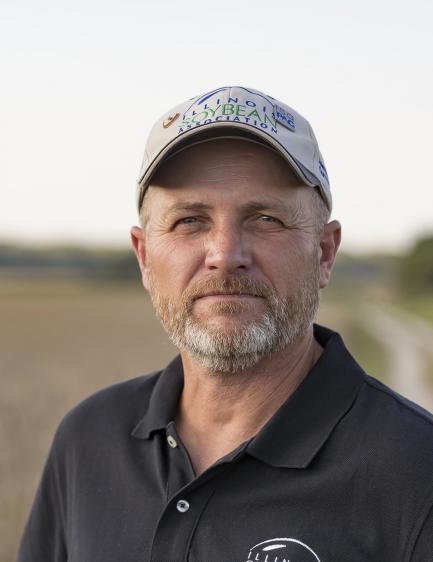ILSOYADVISOR POST
Conservation on Rented Farmland: A Payoff Worth Investing In
Past University of Illinois President Andrew Draper once said, “The wealth of Illinois is in her soil and her strength lies in its intelligent development.” I couldn’t agree more.
Our Illinois farmland is some of the richest and most productive in the country and world, and we continue to enhance our land. While we’re certainly lucky to have tremendous soil in our backyards, it comes with responsibilities to serve the land and employ soil health practices—values I take to heart on my operation.
Currently, I farm over 2,000 acres, raise cattle and operate a custom hay business. While I farm a sizeable chunk of land, much of it is rented. I’m not alone, as half of all Illinois farmland is rented by farmers and owned by non-operating landowners. Although tenants may be hesitant to talk with landlords about conservation, most owners are open to learning from producers like you and me. At the end of the day, we’re the ones walking the fields and, in some cases, we may know the land even better than our landlords.
When it comes to conservation, it’s important to work with landlords to enhance overall environmental stewardship and improve the health of your business, soil and crops. On my operation, these practices include no-till, water and sediment control basins, and cover crops.
I’m a long-standing proponent of no-till systems. My family began no-till farming in the 1980s after watching nutrients and topsoil erode from under our feet on a rented 200-acre piece of land. Our landowner shared frustrations and supported endeavors to solve these issues. And it was this very piece of highly erodible land that opened our eyes to the immense benefits of conservation practices.
After working alongside the owner to implement no-till and cover crops, we overcame the erosion issues. Today, this piece of land is among our most productive and our greatest success story. It wasn’t an immediate turnaround, though. Conservation practices require patience and can take years to show measurable progress. But over the course of 10 years, my landlord and I were thrilled to see noticeable differences from our investments.
Had it not been for a conversation with our landlord, erosion could still be a fighting battle on those acres today. As more generations of landowners move away from the farm, engaging landlords in a stewardship partnership creates sustainable production, adds value to land, increases profitability potential and helps the environment.
So, how do you start conversations to bring landlords into the conservation loop? Luckily, many already have it top of mind. In fact, 96 percent of landowners consider soil quality when making land management decisions according to the American Farmland Trust. Ability to avoid erosion, prevent waterway contamination and maintain soil productivity are among top attributes that landowners value in farm operators.
Simply showing landowners the benefits of conservation practices may be enough to get them on board. For owners, seeing is believing and showing what they’ll get out of the investment is invaluable. Nature thrives when conservation practices are implemented—a win for landowners and tenants.
After sparking the conversation, it’s important to discuss implementation options. As many producers operate on annual rental leases, multi-year agreements are a great way to ensure tenants reap the benefits of conservation practices. Cost-sharing programs are also available to reduce the investment and local officials are always there to support and implement practices.
Even if landowners aren’t looking to sell, increasing land values by implementing conservation practices can set up their land for greater profitability down the road. Collaborating with landowners to invest in farmland provides long-term rewards that pay out year after year.
Because tenant-landowner collaboration is so important, Illinois Soybean Association partnered with the Illinois Corn Marketing Board and The Nature Conservancy to bring farmers new resources to help facilitate these conversations. Resources include a webinar presented by Gary Schnitkey, professor and farm management specialist at the University of Illinois Urbana–Champaign. Dr. Schnitkey discussed the relationship between non-operating landowners and famers, and the importance of conservation practices. Watch the webinar on ilsoyadvisor.com.





Comments
Add new comment